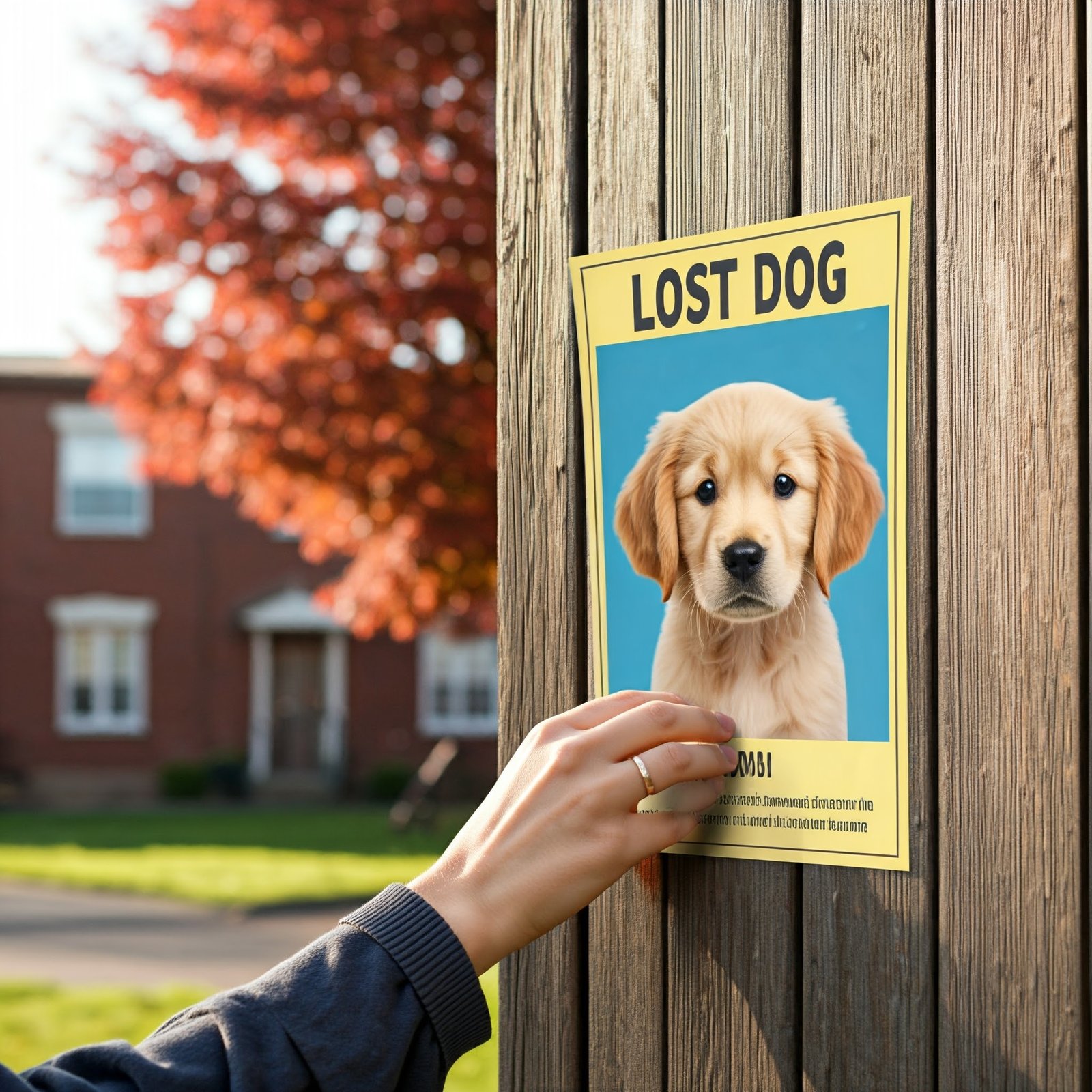For a pet parent, nothing hurts more than losing their favorite animal. Since you’re here, it’s likely that you’re experiencing the same suffering and are unsure of what to do next.
Dogs are capable of running away and becoming lost. Or your adorable pet might be taken by someone. Or there might be further causes.
You can only be saved if you take quick action in this case. As soon as you can, begin your search. Searches conducted early on are more successful than those conducted after some time.
Only we can empathize with your suffering. For this reason, we will walk you through the ten most useful methods for locating your misplaced dog.
Photo by Atanas Teodosiev on Unsplash
8 Steps to Find a Lost Dog
You need to control your emotions and use your head rather than your heart while you seek. This sensitive period may impact your chances of recovering your lost dog.
But do adhere to these eight steps. We sincerely hope you soon have your pet back.
1. Conduct a Deep Home Search
Puppies, in particular, enjoy playing hide-and-seek. They frequently hide in store rooms, beneath blankets, inside cabinets, and in other cramped spaces.
Thus, your house should be the first place you look. Examine every nook and cranny of your house, including under tables, beds, and in your bathroom or any other area that is rarely used.
Your backyard or the area outside your house is another significant location. Search for a garage, some shrubs, and a deserted nook. It’s possible that your dog gets stuck there and cannot escape or is hiding there.
2. Spread Your Missing Dog News in the Neighborhood
Next, include your neighborhood in your search. First, get the word out. It is possible that you need to be made aware that your dog is playing with other animals at your neighbor’s house. So that if it occurs, someone can let you know.
If you need help, look for yourself at their location. You can turn to your loved ones for assistance. Your neighbors may look for something other than your pet. Thus, you ought to have a physical examination.
3. Make Hand Out Flyers and Distribute in Local Places
Flyers can seem outdated to you. On the other side, hand-to-hand distribution works well for recovering lost animals.
Allow enough time to compile all the information about your dog needed to create a visually appealing flyer. It’s preferable to provide a current picture of him. This makes it simple for people to identify. Remember to include caller ID and any other pertinent information.
Several websites offer free templates for flyers. One of those is yours to use and duplicate.
4. Check Security Cameras or Set Up One
An excellent tool for tracking a lost dog’s movements is surveillance cameras. You can be positive if someone took him or if he fled. Examine every camera in your neighborhood or anywhere nearby. Tell them about your predicament, and they will let you view the video. Once you know which way your pet is headed, you can search there.
An additional method for people without cameras. Install one outside the house. If your dog ventures outside your home or tries to contact you, you can find out.
5. Contact Animal Shelters and Veterinary Clinics
Unfortunately, your pet may have an accident if you live in a busy place. We sincerely hope that such an incident never occurs. However, it is still a good idea to contact neighborhood zoos or vet offices.
Not just for this reason—someone might come upon your dog and bring him to these veterinary offices or animal shelters. So go to these locations and tell them your dog is missing. If you can submit a report, please do so as well.
6. Post on the Lost and Found Website
Certain websites are devoted to the simultaneous reunification of lost dogs and their owners. Many animal enthusiasts seek to locate missing animals out of a love for them. Just write on the Google search bar “missing dogs near me.” You may find numerous lost and found websites.
PawMaw is one of them, and it has a vast pet-lover community to help you. On the website, you can submit a lost and found pet post and report your dog as missing. They’ll make every effort to get back to your devoted pet.
7. Use Social Media Platforms and Your Social Accounts
You may be surprised at how much your social media accounts can assist you. This is the most efficient method for drawing in more attention rapidly.
Thus, save time and create a thorough post about your lost dog that you can share on your account. Tell others about the news as well. Now, everyone in your vicinity can identify you and assist you.
8. Use Microchip Data and GPS
It is recommended that pet owners use a GPS or microchip with their animals at all times because they can be very helpful in emergencies. You’re lucky if your pet owns one of them. Try tracking the GPS tracker first if you begin your search early.
If the location is within range of these devices, they can provide an exact coordinate. You have access to current locations. However, microchips are only sometimes dependable in this way. A dog that has been microchipped must be taken to a veterinarian or a microchip provider.
Conclusion
The best buddies for humans are dogs. They are the ideal human companions because of their amiable and playful personalities. As a result, losing these animals causes a great deal of grief, particularly for the pet parent.
There exist multiple causes for dogs to become lost. But hold your tears and remain motionless if you want to be reunited with your beloved dog.
We’ve provided tips for locating your misplaced dog. Starting with a thorough inspection of your house, you should also investigate the neighborhood and other places, contact veterinary clinics, and post on websites. We hope you return to your little pet soon.
Author Bio:
Meet Natalia Michelle, a devoted pet owner and competent writer of TheFitPets. Natalia Michelle brings the world of animal companions to life via intriguing words. Natalia Michelle, a prolific writer, not only shines in her job but also flourishes in pet care and companionship.



